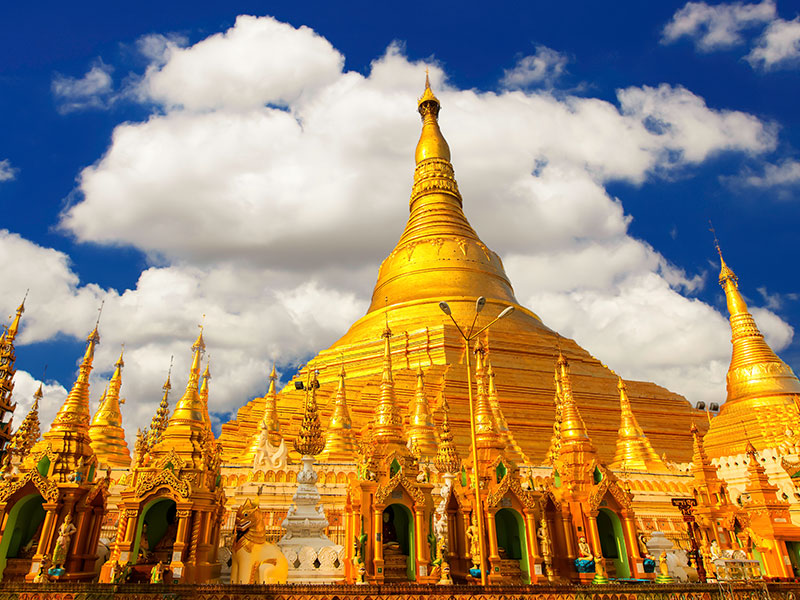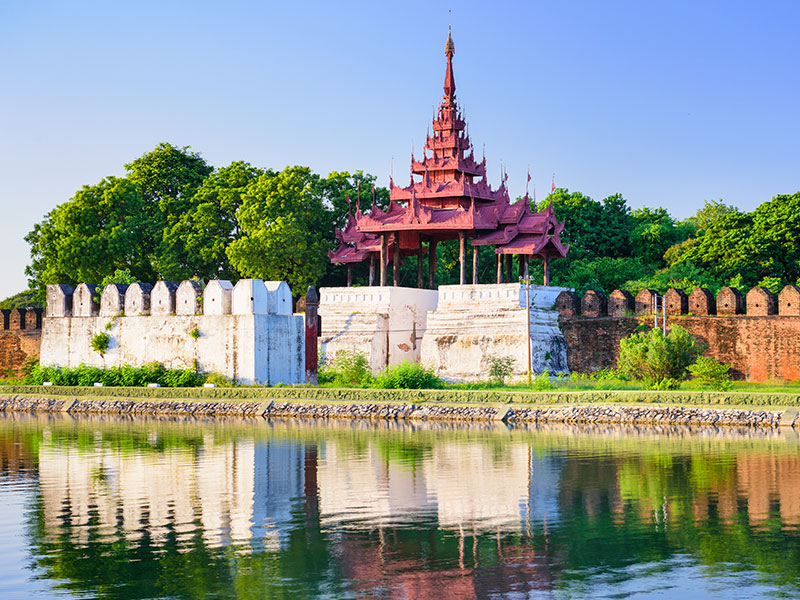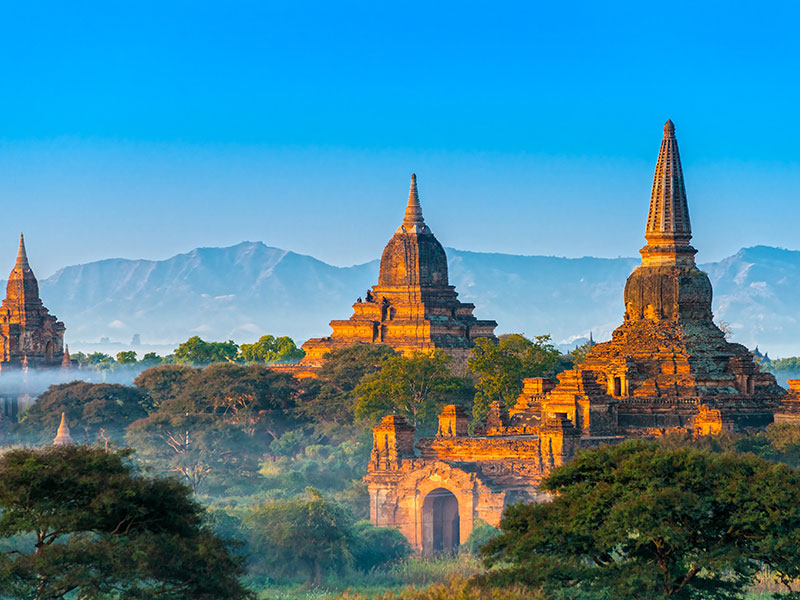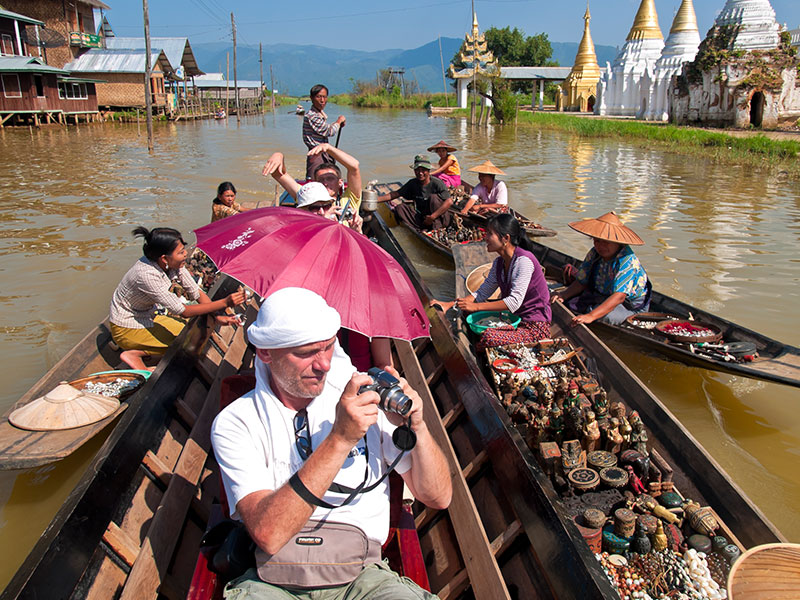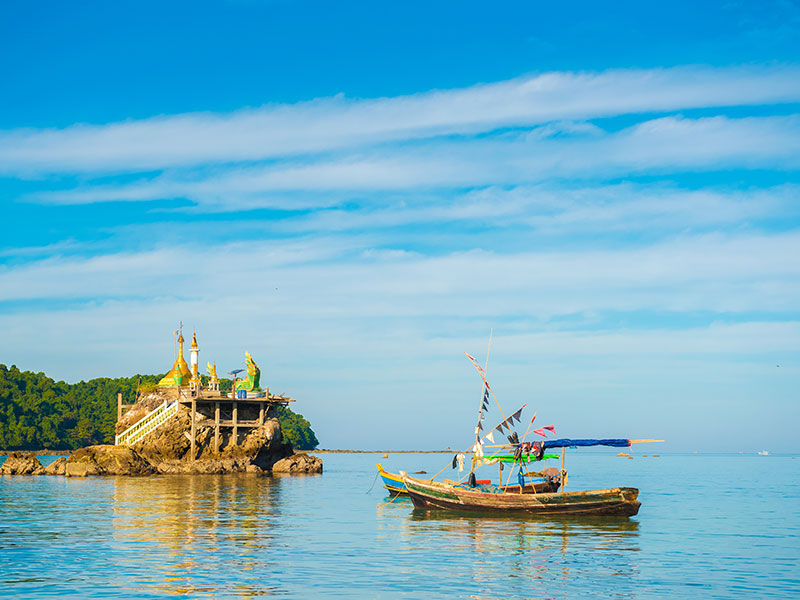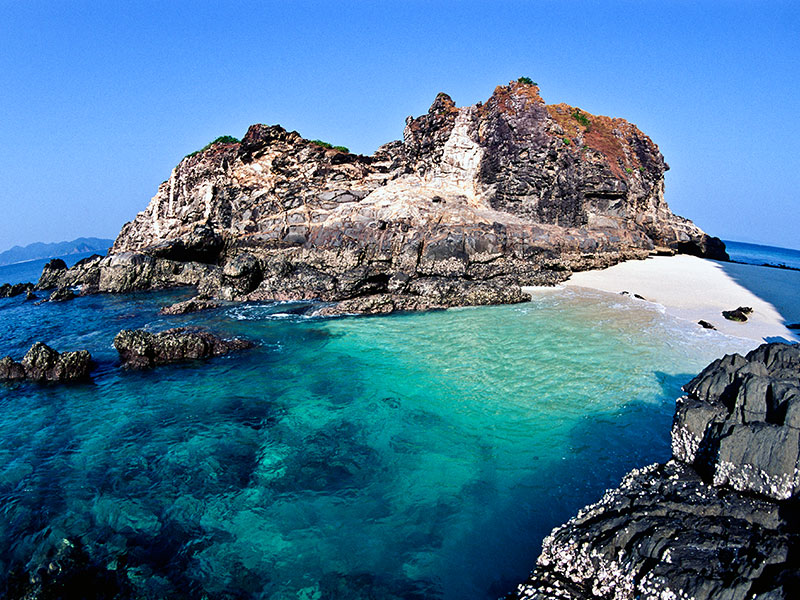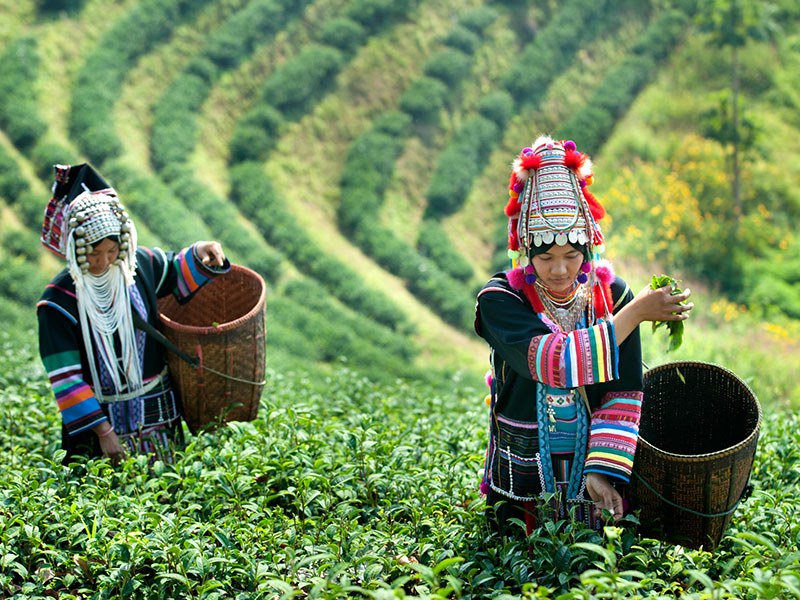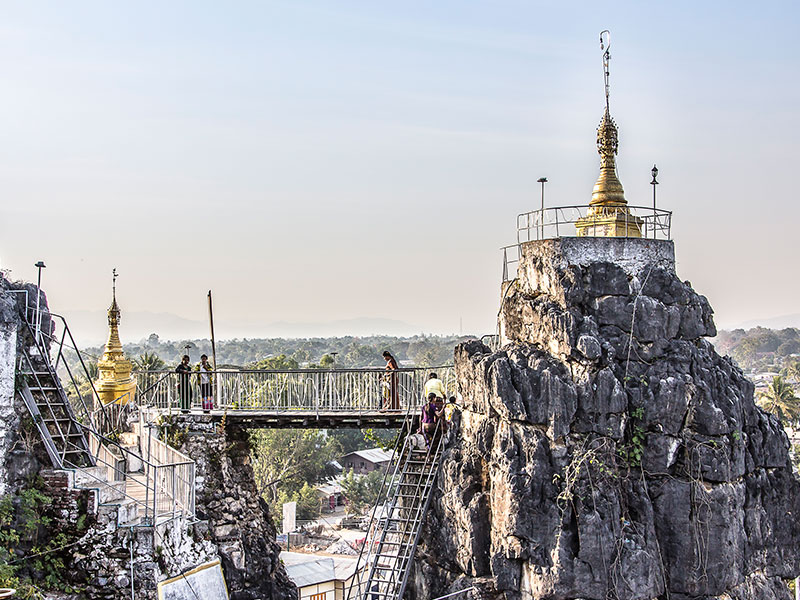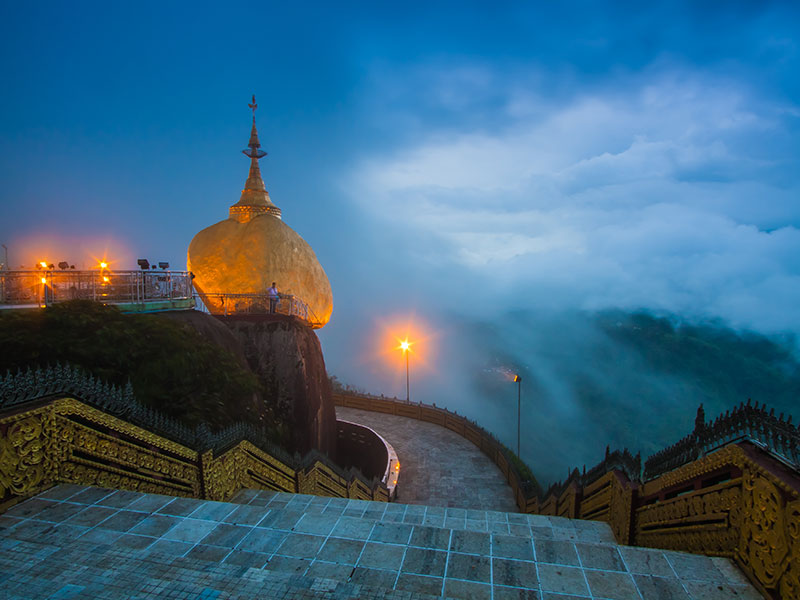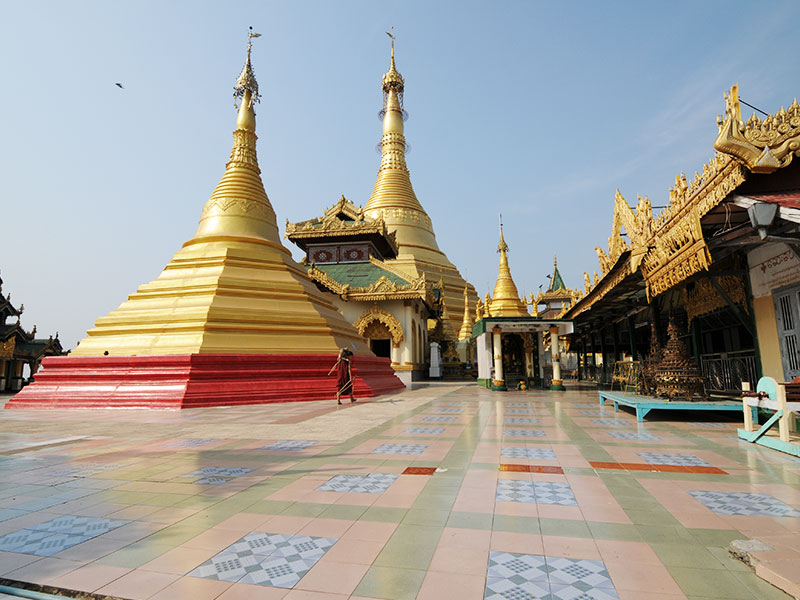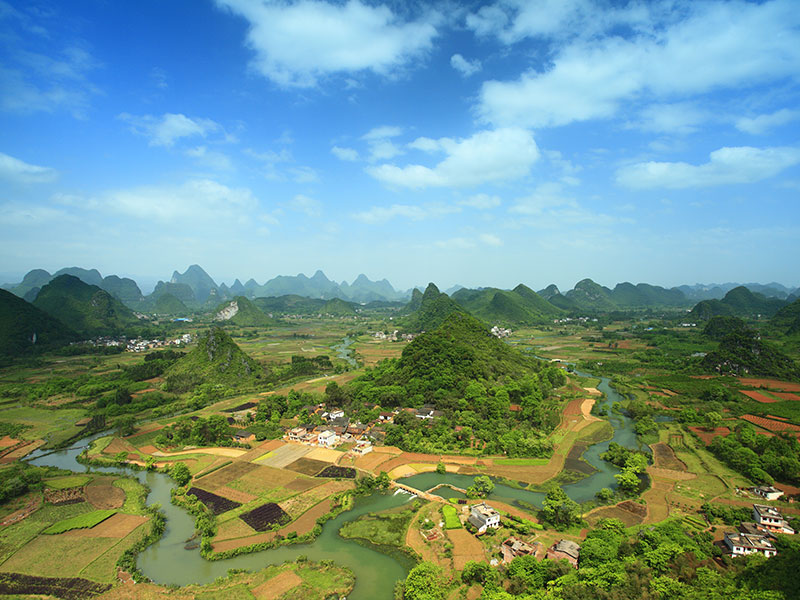Yangon
Yangon (Formerly knowns as Rangoon)
It was essentially a small settlement called Dagon, meaning the city on a spit of land. King Alaungpaya renamed it as Yangon, meaning the City of the End of Strife, meaning Peaceful City.The architects of modern Yangon were Lieutenant Fraser of the Bengal Engineers and an unofficial adviser Dr. William Montgomery, a surgeon. The city was laid out in blocks on a chessboard pattern with reference to two main streets which run at right angles to one another.
About 2,500 years ago, there was probably a coastal fishing village or a trading colony called “Okkala”. After the construction of Shwedagon Pagoda, the settlement grew in fame as Dagon. King Alaungpaya of Konbaung Dynasty founded Yangon when he took the village of Dagon in 1755. He called the settlement as Yangon or “End of Strife”. It becomes a port city and a centre of commercial functions since pre-colonial and colonial days. The Yangon River or Hlaing River gives it color and peninsular look (from aerial view) touching the city in the east and south flanks and the Pazundaung Creek in the west.”
Yangon is one of the most attractive cities in the East. Its fringes are beautiful with pagodas, spacious parks gardens and its atmosphere cooled by the Kandawgyi Lake and Inya Lake. Most of the major Myanmar and foreign companies are located in Yangon. The city is the point of entry for visitors from abroad to Myanmar by air and sea.
The famous pagodas are the landmarks of the city, and serve as a unique charm to the city as well as attractive tourist spots in Yangon. They are the world famous massive Shwedagon Pagoda, the Sule Pagoda in the city centre, the Botataung Pagoda, the Kaba Aye (World Peace) Pagoda and the Chauthtatkyi Pagoda, and there are also many colonial buildings like the Secretariat, where the Cabinet was assassinated in the year 1947, the Supreme High Court, the Yangon General Hospital, the General Women hospital, the General Post Office, the Telegraphic Office, Bogyoke Aung San (former Scott) Market, where you can shop till you drop, the Yangon Harbour, the City Hall, etc. Other places worth seeing are Chinatown, Fruit Market, the National Museum, the Bogyoke Aung San Park, the Kandawgyi (Royal Lake) the Inya Lake, the Htaukkyant World Cemetery, the Jubilee Hall, built in honour of the Queen Victoria, and the Hlawga Safari, etc.
Where to visit
The Shwedagon Pagoda
Shwedagon means the Pagoda of Golden Glory. It is the emblem and the cynosure of attractions in Myanmar. It is built on the Sanguttera Hill, which is the spur of the Bago Yoma (Ranges).
“The Shwedagon rose superb, glistening with its gold, like a sudden hope in the dark night of the Soul “. (Somerset Maugham)
“A beautiful, winking wonder”. (Rudyard Kipling)
It is a really impressive monument on earth. Its exact time of origin is hidden in folklore and legend. But Myanmar people believe that it was built about 2,500 years ago. It is in the heart of the metropolis Yangon. The magnificent stupa is plated with 8,000 solid gold slabs and its tip is set with diamonds, rubies, sapphires and topaz.
The amount of gold plated on the stupa is more than that of the gold in the Bank of England.
Eight strands of the hair of the Buddha and some other relics are said to be enshrined in the vault of the Stupa. A huge diamond in the middle of the Stupa catches the first and last rays of the sun.
Around the mighty stupa, cluster an incredible assortment of smaller stupas, images and pavilions. The Pagoda Platform covers 5.6 hectares on the Singuttara Hill which is the spur of the Bago Yoma .The Stupa is 58 meters above sea level. King Okkalapa built the great Pagoda. Its initial height was only 66 feet; King Binnyagyan continued to build it to the height of 302 feet. Some devout kings had made many renovations. The two leogryphs attract the visitors.
The Pagoda had suffered from earthquakes no less than eight times in 1564, 1611, 1628, 1649, 1664, 1769, 1888, and 1914, and from a serious fire in 1931.
The Chaukhtatkyi Pagoda
It is home to a 72 meter long reclining Buddha Image, as large as the one in Bago. It is on Shwegondine Road .It is housed in a large natal – roofed shed. It is not so far from the Shwedagon Pagoda. There are some fortune-tellers and palmists and near the Pagoda, predicting the horoscopes of clients. It is also a not-to-miss tourist spot, while in Yangon.
The Sule Pagoda
The word Sule derives from the Mon word Kyaik Athok, meaning the Pagoda where the sacred hair is enshrined.
The Sule Pagoda is in the heart of the City, amid the rush and bustle of the busiest sector of the city. It is a center of pilgrimage of devotees from all over the country.
The Sule Pagoda was built by a Court Minister Maha Thrua in the year 235 Buddhist Era or about 2,200 years ago.
A strand of hair and other relics of the Lord Buddha were enshrined in the Pagoda.
The Botataung Pagoda
The Botataung Pagoda means the Pagoda guarded by one thousand vanguards. Unfortunately, the Pagoda had been destroyed by Allied bombing during the Second World War, precisely on November 8, 1943. During its postwar reconstruction, a treasure vault was unearthed beneath the ruins. This led to more discoveries of images of the Lord Buddha in silver, bronze and alabaster, and other priceless treasures.
The Kaba Aye Pagoda
Kaba Aye means World Peace, hence the Pagoda of World Peace. It was built in the year 1952, dedicating to the cause of world peace. It is a harmonious blend of traditional and modern. Both its height and basal perimeter are 118 feet. The Pagoda is a milestone in the world Buddhist history. In the year1954 which marked the 2,500th anniversary of the Buddha’s birth, the Kaba Aye Pagoda served as the meeting place of eminent Buddhist clergymen, including primates from around the world to commemorate the Sixth World Buddhist Synod (Chatta Sangayana).
Around Yangon
Thanlyin
Thanlyin had been the base for the notorious Portuguese adventurer Philip De Brito between 1500s and early 1600s. He ruled over Thanlyin for about 13years. Actually, he was officially a trade representative for Rakhine (Arakan), but he ran his own little kingdom in Thanlyin, siding with the Mon in their struggle against the Burmese. In the year 1599, he occupied Bago, but in 1613, the Bama King Alaungpaya besieged Thanlyin and impaled him and King Natshin Naung to death. King Alaungpaya destroyed Thanlyin completely in the year 1756. Today, nothing of this ancient city is to be seen. There are two tombs of Minister Padetha Raza and the great soldier-poet Natshi Naung, King of Ratus.
A short busride would take you to the Golden Kyaikkhauk Pagoda, 21 km from which is the Yele Paya in Kyauktan. The Pagoda is perched on a tiny island in the middle of the river.
Bago City
It is just 80 km by car from Yangon. It is a one-time capital of the Hanthawady Dynasty of Mon kings. It was founded by two Mon princes, who strangely saw a female himsa bird perching on the back of the male one. Taking it as a good omen, the two prices built a city on the spot and named is Hanthawady, the city of himsa birds. Later it became the centre of the Mon Kingdom.
It is an excursion place on the way to the famous Kyaikhtiyo (Golden Boulder) Pagoda. It is home to numerous pagodas and a reclining Buddha called the Shwethahlaung, which is 55metres long. The most famous pagoda in Bago City is the Shwemawdaw. Bago Yomas (Ranges) is home to the best teak wood. Of particular interest is Kahlyani Thein (Sima) or Ordination Hall. In Bago, one spectacular site not to miss to study is King Bayintnaung’s Kanbawza Thadi Palace. Those tourists who had visited were awe-struck and amazed to see it. The Shwemawdaw Pagoda festival is very pompous and is annually held in April. The ceremony is 13 day long. Theatrical artists perform on stage with full force to show their competitive edge over their counterparts and to win future performance contracts.
The Htaukkyant Cemetery
It is about some fifteen miles by car from Yangon. It is a cemetery with 27,000 urns of Allied soldiers during the Second World War. It is under the management of the Commonwealth War Graves Commission. It is beautifully landscaped and is one of the interesting tourist destinations worth visiting.
The Hlawga Wildlife Park
Just beyond the Htaukkyant Cemetery is the Hlawga Wildlife Park, which is 1500 square miles wide and managed by the Forest Department, where you can study the flora and the fauna, including gibbons. Riding elephant is great fun for kids. You can also enjoy a variety of nice restaurants. You should not miss to visit there.
Twante Town
It is a very enjoyable tidal cruise from Yangon to and from Twante, a small town, not far from the Twante Canal, which is 22 miles long. Twante is famed for the Twante Shwesandaw Pagoda, which is larger than the Yangon’s Shwedagon Pagoda. Pottery and the production of various vegetables and fruit in large quantity make Twante famous. Of particular interest is the fact that all ships from deltaic area of the Ayeyarwady Division call at Twante, hence a busy jetty.
OTHER DESTINATIONS

Quick Links
- About Us
- Social Responsibility
- MICE Tour
- Popular Tour
- Our Local Events
- Discover Myanmar
Let's get contact
To get in touch with us about any enquiry, suggestions or information, fill out this form or email [email protected]
Newsletter
- Careers
- Terms and conditions
- Privacy Policy
We accept payment by:


